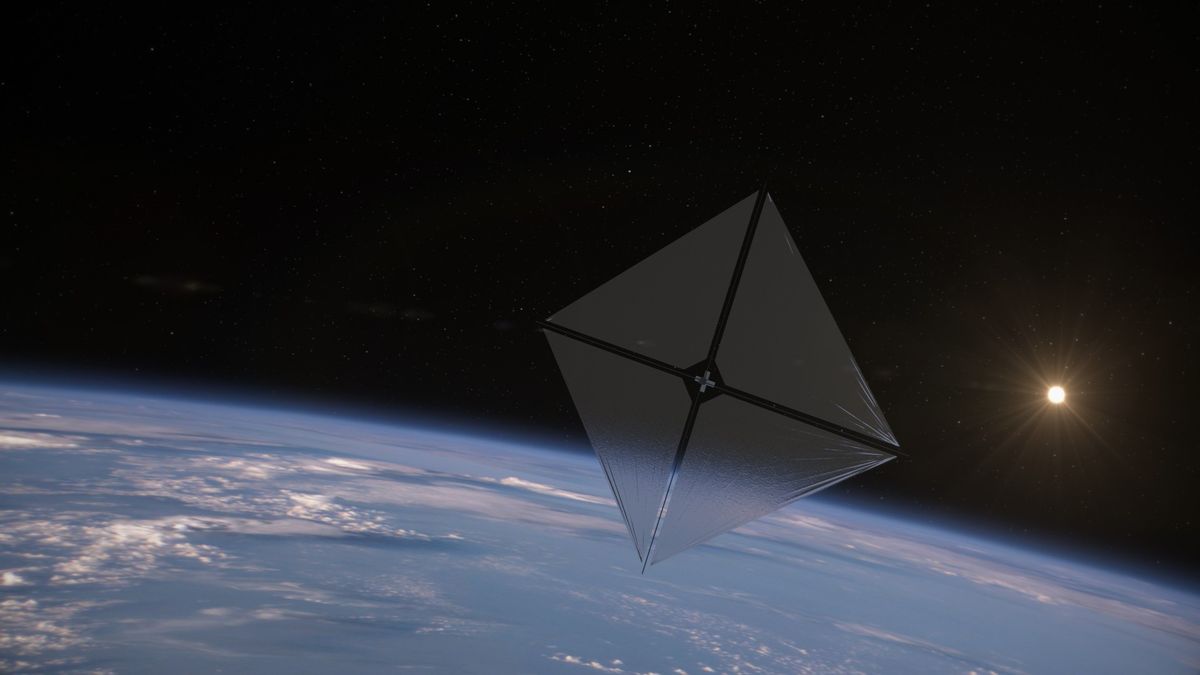On April 23, NASA launched a sun sail prototype to orbit our planet — a piece of technology that could revolutionize the way we think about spacecraft propulsion. On August 29, the agency confirmed that this sail had successfully deployed in space. But we still had no official photographic evidence of this.
Now, on September 5, we are doing just that. NASA has released the first image of the open solar sail, formally called the Advanced Composite Solar Sail System, and has stated that the spacecraft from which the sail was released will continue to send back more images and data over time.
The image itself may seem a little confusing to make heads or tails of, and that’s partly because the spacecraft has been tumbling slowly through space. The tumbling is happening because, as NASA explains in a propositionthe spacecraft did not undergo any post-deployment attitude control. This behavior is therefore to be expected, the team says. Operators will implement attitude control and stabilize the spacecraft after they have collected enough data to paint a picture of how the sail and composite boom holding it together are doing. Hopefully we will get some easier-to-decode images after stability is achieved. But in the meantime, let’s talk about what we can actually see in this image.
As NASA said in the statement, it’s important to remember that there are four wide-angle cameras in the center of the spacecraft that anchor the sail.
At the bottom of the image, a camera shows the “reflective sail quadrants supported by composite booms,” while at the top of the photo we can see the rear surface of one of the spacecraft’s solar panels. Most spacecraft are covered in solar panels because that’s how they power themselves: with sunlight.
“The five sets of marks on the boom close to the spacecraft are reference marks to indicate the full extension of the sail,” the statement said. “The boom is mounted perpendicularly and the solar array is rectangular, but appears distorted due to the wide-angle camera field of view.”
Related: A widespread solar storm hit spacecraft in rapid succession near the Sun, Earth and Mars

The success of this mission so far is pretty amazing, because solar sail technology is an incredibly impressive concept, both in practice and in theory. Basically, it takes advantage of the way photons, which are particles of light, have the ability to exert pressure on an object despite being massless.
A solar sail looks like a flat sheet of material (no different from a regular sail) and can be quite large. In the case of NASA’s Advanced Composite Solar Sail System, the sail is about a square the size of half a tennis court, or about 860 square feet (80 square meters). The key is that these sails could hypothetically be attached to any kind of spacecraft, with particles of sunlight bouncing off their material.
So, just like a sailboat on Earth is a vehicle that is propelled by the pressure of the wind hitting the sail, a solar sail ship in space is a ship that is propelled by the pressure of sunlight hitting the sail. This would not only mean that a spaceship with solar sails could reduce the need for fuel, but theoretically it should also be able to reach very high speeds because it can fly without fuel acceleration on an indefinite time scale.
The story can’t reach such an epic conclusion without chapter one, though—which is where we are now. Well, maybe chapter two or three, because this new solar sail system isn’t the first to be launched. Japan’s Ikaros spacecraft is responsible for the first successful deployment of the solar sail in 2010, and there have been a handful of other attempted solar sail adventures since then.
Still, the Advanced Composite Solar Sail System will make its mark on propulsion history. The team’s next step (after stabilizing the spacecraft and analyzing its flight dynamics) is to maneuver the spacecraft into orbit. In the meantime, in a fun twist of events, you can try to spot the sail yourself. Ironically, the spacecraft’s unstable orbit now makes it nice and shiny for anyone hoping to catch a glimpse of it as it zooms across the night sky.
Originally posted on Space.com.



